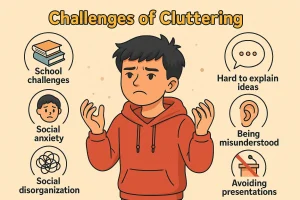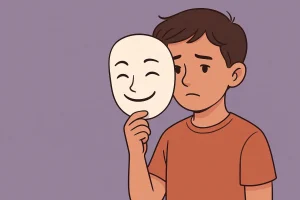What are the tips to handle different kinds of tests?
By Prapoorna M
Last Updated: November 26, 2021
As there are many kinds of exams held out there, the format used for all the tests are also different. Here are some tips to handle any kind of tests that are in the famous formats. The tests we attempt include Multiple choice questions, Question and answer format, True or false format or Matching type questions. A student should always be ready to answer any kind of test. It happens that a question expected in multiple choice format, can also be given in fill in the blank format. Read the tips below on how to answer any question given in any of those formats.
Also read: What are the tips to handle different kinds of tests?
Multiple choice tests
The Multiple choice format is a mostly used testing format because the exams are relatively easy to grade and the questions can effectively evaluate students’ knowledge of facts and also the understanding of concepts. This is an objective form of testing since, if the questions are well written, there is only one correct answer to each question, leaving little scope for interpretation.

Work quickly
Working quickly through multiple choice tests, one can ensure that the
test is completed in time. Read each question only once understanding
carefully and underlining key words as one reads. You can cross out unrelated parts of the question for clarity. If you are unable to answer the question after your first reading, then mark it for later consideration as time allows. But, be cautious of “all of the above” and “none of the above” responses, as they could puzzle you sometimes.
Guess before choosing
After reading the question, decide what the answer should be before looking at the answer choices. Then examine the choices and pick the answer that matches closely to your answer. If none of the choices is similar to your guess, then study the answers carefully looking for key words and other clues. Choose simple answers even if they seem obvious. Remember that you should never pick an answer without first reading all of the choices, no matter how sure you are of the answer.
Eliminate unlikely answers
Cross off answers that are only partly correct or only partially answer the question. Eliminate answers by striking on them, that are correct but do not answer the question. When you find out that one response is not true, eliminate “all of the above” as a possible answer because it indicates that all the given choices are correct for that question. But if you are absolutely sure that at least two of the choices are correct, then you are probably safe in choosing “all of the above.”
Look for clue words and numbers
If two of the choices given are opposites, one of them is probably correct. Also, keep in mind that answers with the following words are usually incorrect: always, never, all, none. There are more chances that answers with the following words are usually correct: seldom, generally, most, tend to, probably, usually. Also, look for grammatical clues between the question and the choices.
For example, the question and correct answer often have verbs of the same tense and have nouns and verbs that agree. If two choices are very similar, differing only in degree, the one expressed in more general terms is probably correct.
When in doubt, guess
As long as you are not penalized for wrong answers, guessing is a good strategy to use. Even if you are randomly guessing, there’s a chance that you should get about 25% of the questions are correct. With educated guessing, the percentage may rise to 75%. Educated guessing involves eliminating all doubtful answers first and looking for clues in the question and answers. The longest response is often the correct answer.
Do change answers
Consider changing answers only after completing the entire test. Reread the directions before checking and changing answers. First check the questions that were highlighted the first time through the test. Then check the other questions if time permits. Make sure all the answers are legible and are in the right place like the circled ones, answers on blanks, answers on an answer sheet, etc.
Don’t give up
One should resist the temptation to become frustrated, bored, or anxious, to continue with the test. To avoid that, move quickly through the test. Use relaxation techniques to beat your anxiety. Make use of the entire class period, allotted to you, to complete the test and check answers.
True-false tests
True-false questions are best suited for evaluating students’ knowledge of specific facts and concepts. Like multiple choice questions, true-false questions are objective in that there is only one correct answer.
Read the questions carefully
Read each word in the statement, circling or underlining key words and phrases. Break the complex sentences into parts, and consider the validity of each part separately. Cross off irrelevant information in the statement, to avoid confusion. Also, circle the key words listed in the next paragraph.
Look for clue words
Remember that statements with the following words are usually false: all, only, never, always, because. Statements with the following words are often true: seldom, generally, most, tend to, probably, usually, and often; none. The content of other questions may provide additional clues.
Guess
Take guesses for true-false questions only if no penalties are assessed for incorrect answers. Always remember that if a part of the statement is incorrect, the entire question is false. As a general rule, there tend to be truer than false questions on exams; so, when in doubt, guess “true.”
Don’t change the answers
True-false answers should not be changed unless one is absolutely sure of the answer. If one is not sure, it is best to stick with the original impulse and write an explanation in the margin of the test.
Matching tests
Matching questions are particularly effective for testing students’ knowledge of terms and definitions, people and their contributions, dates and important events, and other numerical information.
Matching questions are classified as objective
Read the directions carefully
The directions for matching questions usually contain vital information including whether questions only have one answer or more than one answer, if responses may be used only once or more than once, and how answers are to be written (on an answer sheet, on blanks on test, draw lines to match items, etc.). To save time, read through the column with the longest phrases first. Then read and reread the shorter column to match the two.
Do the easy questions first
Make sure that you answer the known ones first. Mark off the choices as you use them. If answers can only be used once, this will reduce the number of choices to select from for the unknown questions.

Do the difficult questions next
Cross off the known items first implementing the process of elimination. Then, try to visualize information in the notes or textbook, or try to associate the questions with things you already know. Look for some clues in grammar or tense. If answers may be used more than once, look at the items that have been used already to answer the easy questions. Finally, concentrate on the answers that haven’t been used yet.
Fill-in and short answer tests
Fill-in the blank questions are used most often to evaluate students’ recall of details like dates, terms, and people. Many find them difficult to answer. Fill-ins should be objective questions, having only one correct answer. Short answer questions, on the other hand, help to evaluate students’ understanding of concepts and are more subjective. Similar kind of strategies may be used when answering fill-in and short answer tests.
Read the questions carefully
Get a clear idea on what you are asked to answer. Underline the key words and phrases. Break complex questions into smaller parts and evaluate each part separately.
Look for clues
Look at the grammar and tense of the questions for clues in filling the answers. Decide on the answer if it should be a noun, a verb, or a qualifier and then if it is a singular or plural. Other questions on the test may provide contextual clues. Overanalyzing the Questions may lead you wrong. Same way, don’t read too much into the wording of the questions.
Watch the blanks
The number of blanks, and sometimes their length, may also be a clue to the answer like in terms of the number or words, and perhaps the length of the words. Think of the Type of Information Requested.
Make educated guesses
Examine the key words and phrases in the question and picture them in your notes or try to remember hearing the instructor talk about them. Try to remember what other ideas were discussed in relation to these key words. Again, consider the context and grammar of the question. This process gives you a clear idea on the answer.
Number problems
Tests in some courses such as math or statistics the test paper may be comprised completely of number problems. In other courses like accounting, chemistry and physics, a significant number of test questions may be seen in this format.
Work systematically
If the directions indicate that you are not penalized for arithmetic mistakes, spend less time on accuracy and checking answers and spend more time on setting the problem up correctly. If arithmetic errors are counted off your score, do the following. Write all numbers carefully in columns with the decimal points in line. Recopy answers from scrap paper very carefully. Watch units of measurement. If permitted, use a calculator for all arithmetic, even the simplest operations. Leave enough time to check answers.
Organize your work
First of all, make a list of all the numbers and variables given to you in the problem to determine what you are supposed to find or calculate. Identify the formula(s) needed to solve the problem. Label the visual aids with the data provided in the problem and use pictures and graphs as needed to interpret the question. Before solving your problem, estimate the supposed answer. Gather some idea on
- What will be the relative size of the number?
- Will it be positive or negative?
Now, use all of the data provided in the question which may be needed
to solve the problem.
Study visual aids carefully
If graphs and figures are given in the problem, study them carefully.
Pay attention to the important points like
- Is the graph origin at (0,0)?
- What are the intervals for the axes?
- Are any numbers skipped on the axes?
- What are the units of measurement?
Don’t quit
When you run into trouble setting up the answer or solving the formulas, don’t give up. Substitute real numbers for the variables to see if the question makes more sense. Think of real-life situations when the formulas or concepts were used. If fractions are a problem, substitute rounded numbers or decimals for them.
For multiple choice tests
Some number problems are in such a way that students are asked to solve the problem and choose an answer from a multiple choice list. In this case, cover the answers until you have worked on the problem. This helps to reduce biases in the way you set up the problem. There wouldn’t be any indescribable pressure on you. Now, estimate what the answer should be. As a general rule, eliminate answers that are of very high or very low value than your estimation, especially if you have to guess at the answer.
Check your answers
Always adjust your time to cover all of your answers. Reread the directions given to this section and read each question. Make sure you have answered all parts of the question and have used the correct units of measurement. Check whether all your answers make sense as per the given information in the problem. Compare the estimated and calculated answers. If time permits, rework the problem using another method and check for accuracy. Check all decimal places and signs. For inequalities, try substituting other numbers besides the answer to see if they make sense.
These constitute the strategies for handling different types of tests a student can encounter. Are you struggling with test anxiety issues or worried about your career and thinking about having an expert help? Book an appointment today with one of our psychological experts for all your counselling needs.
Book your Free Consultation Today
Parent/Caregiver Info:
Client’s Details:
* Error Message









